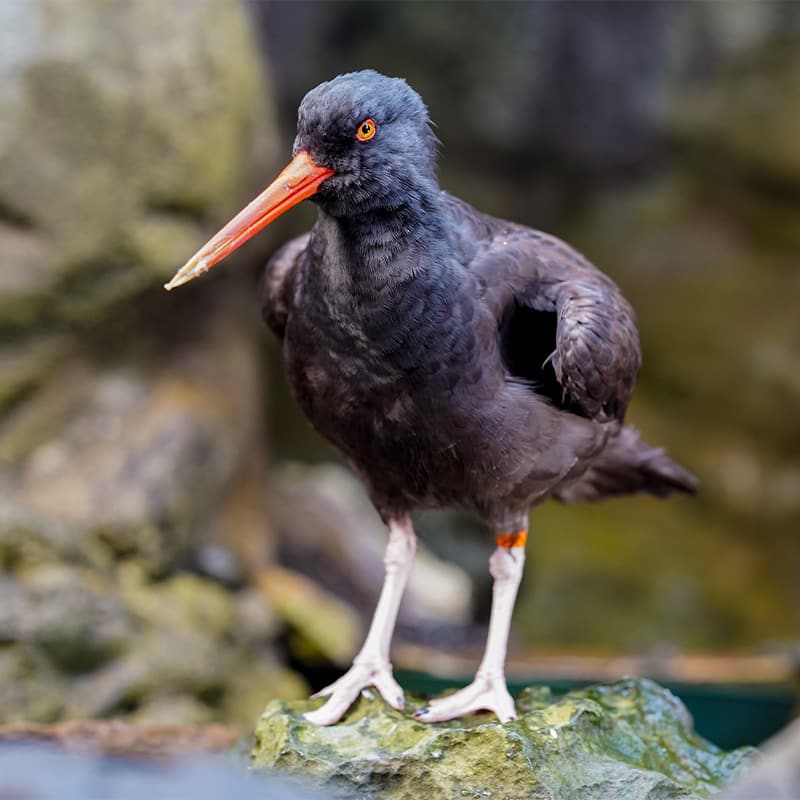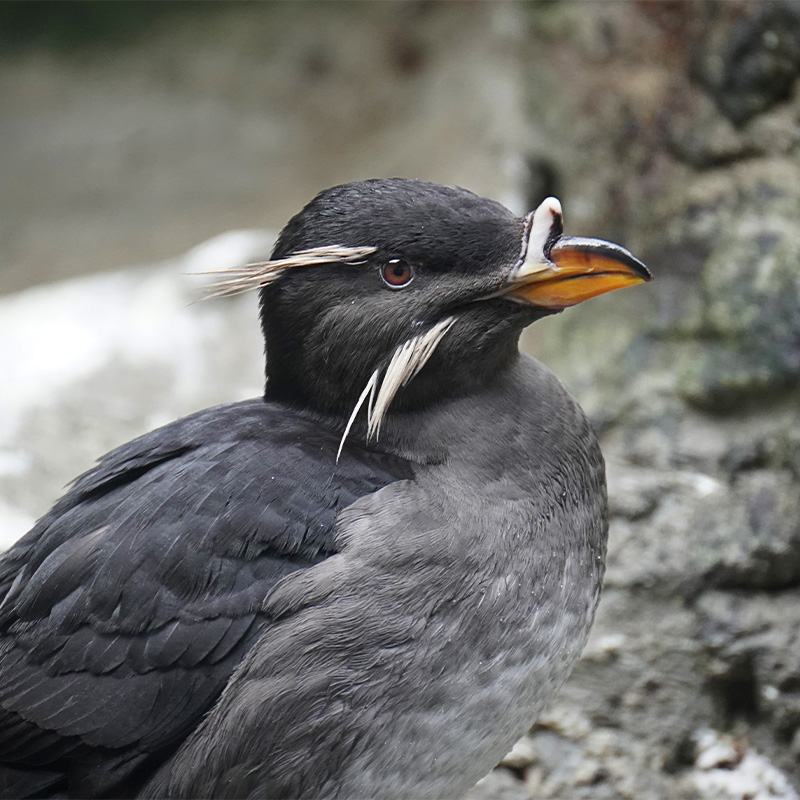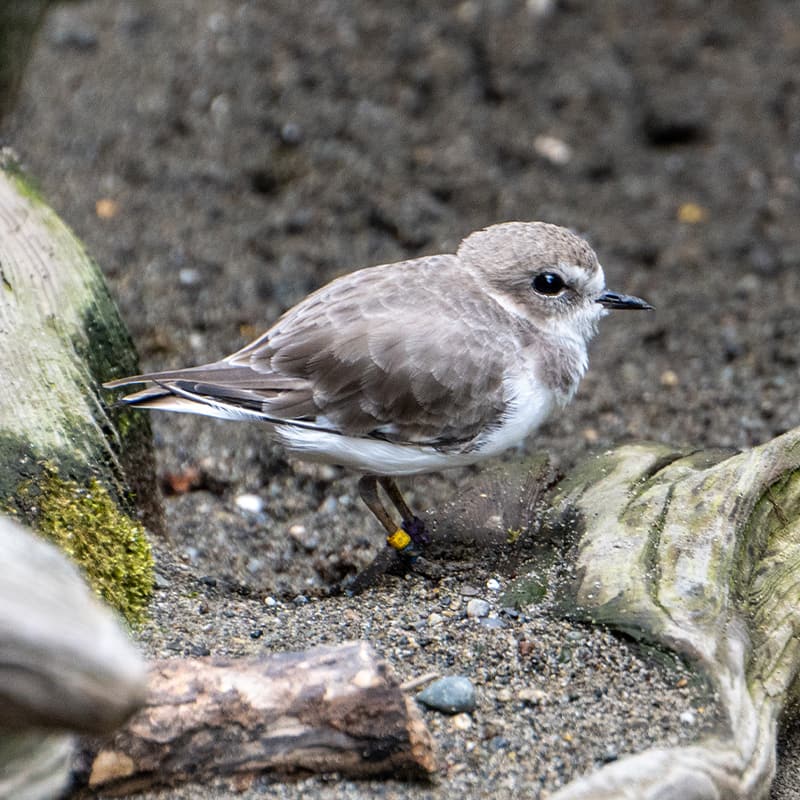- Birds
Common murre
Bi-coastal diving birds
Common murres are found in both the Atlantic and Pacific oceans, in cooler northern waters. They’re more widespread in the Pacific Ocean, with a range that runs from Alaska to central California.
At the aquarium
- Bird habitats, Pier 60
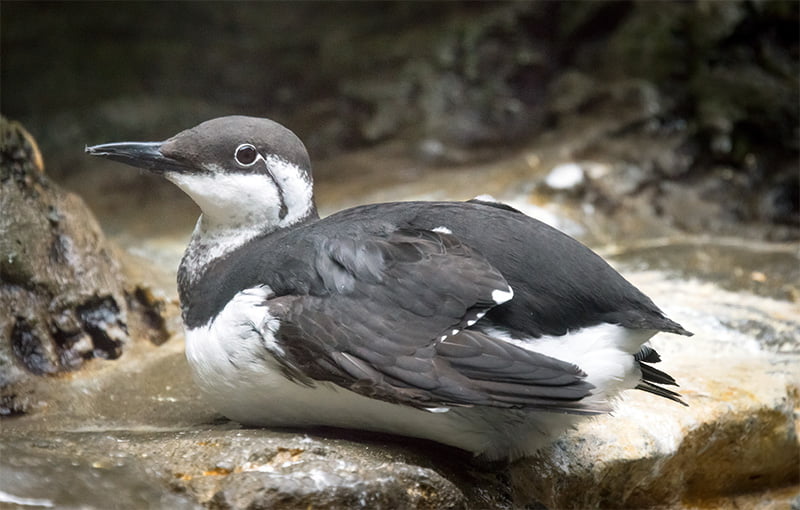
Baby steps
The incubation of a common murre egg takes approximately five weeks, and both parents participate in the process. That cooperation continues after the chick hatches, with both parents helping with feeding and care. Chicks are able to walk before they can swim or fly, and parents are often seen standing between the nesting site and the cliff edge, blocking chicks from jumping off. About three weeks after hatching, chicks are capable of swimming and diving—and they jump into the ocean from the cliff edge (a distance of up to 1,500 feet!) with the adult male following closely behind. For the next couple of weeks, until chicks become independent, they’re cared for and fed by their fathers at sea. Females remain at the nesting site during this time, then return to open ocean themselves.
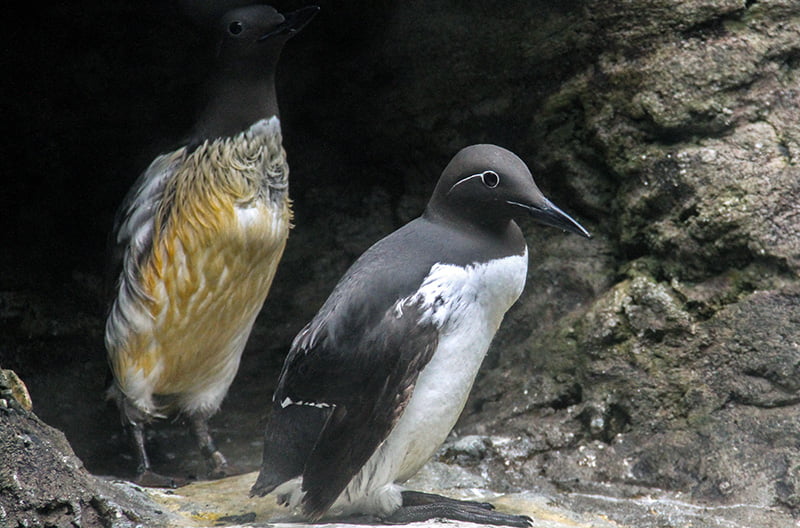
Help care for common murres
While common murres are a designated as a Species of Least Concern by the International Union for Conservation of Nature (IUCN), they are still vulnerable to numerous human-caused hazards such as oil spills and gill-netting. When you care for our marine environment, you’re also caring for common murres—in both the Pacific and Atlantic oceans, and even along the Washington coast!
Graceful in water…elsewhere, not so much
Like all auks, common murres are diving birds. Plunging up to 350–400 feet below the surface and remaining submerged for up to one to two minutes at a time, common murres use their wings to swim while hunting for a wide variety of fish including herring, cod, capelin and sand lance as well as crustaceans, squid and marine worms. Their agility in the water is contrasted by an awkward appearance while in flight or moving on land.
Shore leave
Common murres spend much of their time on the open ocean and come ashore only for breeding season. While on shore, common murres nest primarily along rocky cliffs—except they don’t actually build nests. Rather, females lay their eggs on bare rock ledges, under overhanging rocks, or on the ground. Females lay only one egg each year. The eggs are so pointed at one end that they roll around in a circle when placed on a flat surface. This shape may have evolved to keep eggs from rolling off rocky ledges and into the ocean below. Common murre eggs also have distinctive color and markings: these variations help murre parents find their own eggs when returning from foraging at sea. The parents need all the help they can get in that regard: common murre colonies, known as loomeries, as so densely packed that adults actually touch each other on both sides!
Quick facts
These diving birds are able to plunge up to 350–400 feet below the water’s surface.
Common murres use their wings to swim while diving.
Murre parents take turns incubating their eggs, and both parents help with feeding and care once the chick hatches.
